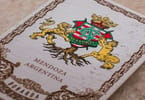Whenever I take students to visit Lima Peru, one must-see place of visitation is Lima’s Museo de La Inquisición. (Inquisition Museum). The museum sits in close proximity to Lima’s congressional buildings and seems to be saying: “be careful not to repeat the horrors of the past.” At the museum visitors see the horrors of the Inquisition, how the inquisitors convicted innocent people, and how in the name of religion humans were tortured and murdered. Visitors go through the museum often in silence and the museum’s staff has told me that they hope to show the world how religious fanaticism become the vehicle of personal and cultural destruction. In many aspects the Museo de la Inquisición is not that different from Jerusalem’s world famous Yad vaShem or Washington DC’s Holocaust Museum. The given logic for visits to each of these museums is to teach us about the past, to “force” the visitor to confront his/her own dark side and to understand that human beings are capable of reaching levels of unfathomable cruelty.
These museum visits, however, are more than mere historical tours. They are also part of a gene of tourism that is often called by tourism specialists “dark tourism” or by its technical name “thanatourism”. Although the term has multiple definitions, the most common definition is that of visits to places that are in one way or another associated with tragedy or humanity’s darker side. A common definition for this form of niche tourism is that it refers to visitations based on events that have taken place in recent times and force the visitor to question modernity. (Lennon and Foley, 2002). The definition, lacking. We do not know what the term “modern times” means. In past writings I have defined dark tourism in a broader manner: “those events, which are more than just tragedies in history, but rather touch our lives not merely from the emotional perspective, but also impact our politics and social policies” (Tarlow: 2005).
Dark tourism may apply not only to museums dealing with past atrocities but also to site where tragedies have occurred, battlefields where death still hovers over the visitor, or even places where crimes have occurred. Some might argue that dark tourism is tourism at its most sensitive point. In his Poetics, Aristotle argues that “tragedy “shows” rather than “tells;” that tragedy is higher and more philosophical than history because history simply relates what has happened while tragedy dramatizes what may happen, “what is possible according to the law of probability or necessity.” History thus deals with the particular, and tragedy with the universal. Events that have happened may be due to accident or coincidence; they may be particular to a specific situation and not be part of a clear cause-and-effect chain. Therefore they have little relevance for others. Tragedy, however, is rooted in the fundamental order of the universe; it creates a cause-and-effect chain that clearly reveals what may happen at any time or place because that is the way the world operates. Tragedy therefore arouses not only pity but also fear, because the audience can envision themselves within this cause-and-effect chain,” (http://www2.cnr.edu/home/bmcmanus/poetics.html, Feb. 29, 2012). If Aristotle’s theory of tragedy is correct than we can argue that dark tourism is the highest form of tourism, the tourism that takes us beyond history and forces us to enter into the deepest corners of the soul.
This fascination with the tragic may manifest itself in multiple formats. Thus, we often place places of great human tragedy such as Auschwitz, in this tragedy. In a like manner we also consider places of personal tragedy such as the site of the Kennedy assassination in Dallas to be a form of dark tourism. It can also be argued that locations where major military battles occurred are a form of dark tourism, as the visitor may go from grave to grave. We may also include in this category cemetery tours, not only visits to National Cemeteries but cemetery tourism in general. Finally the field can encompass both the historical combined with the imaginary. Can we consider Halloween tourism where the “dead” are said to emerge from the grave as ghosts not also a form of dark tourism? We may thus place in this category anything from London’s Jack the Ripper tour to the places where “witches” were burned such as in Salem Massachusetts.
The study of dark tourism forces the tourism scholar to ask many questions. Among these questions are: what motivates people to spend their time and money to go to a place where others have suffered? Is this form of tourism an expression of the masochistic spirit hidden deep within the human soul or the desire to conquer such a feelings? Do we seek the tragic as a way to feel superior to those who have suffered or do we visit these locales as a form of pilgrimage or reconciliation? Is dark tourism the counter balance to our good sides or does it assuage our a sense of guilt?
We may also contrast dark tourism to what I call “herocentric tourism.” I define herocentric tourism as the desire to celebrate the particular, to show that some people or events are singular in nature and hold special places in history. Thus, celebrating a military or sporting victory is both historically unique and non-replicable. Herocentric tourism provides a halo affect. It says that the visitor shares in the accomplishments of the other while realizing that these accomplishments are beyond this/her pale of possibilities. If dark tourism emphasizes the human potential in each of us, then herocentric tourism allows us to bask in the halo of the other. Does herocentric tourism take us to places or events that lift our spirits by allowing us to celebrate another’s accomplishments? Is hereocentric tourism a form of altruistic behavior? From this perspective we can argue that dark tourism and herocentric tourism are merely two sides of the same coin? Just as dark tourism forces us to see or overcome places and events that act as reminders of tragedies of which we are all capable, we want to believe that herocentric tourism makes us feel good about the human condition and acts in a secular-religious sense as a way to lift the visitor’s spirits. The below chart then outlines the common aspects and differences between dark tourism and herocentric tourism
Dark Tourism
Herocentric tourism
Is replicable?
Yes
No
Provides “X “ emotions
Guilt, disgust, sadness
Joy, celebration, feeling part of something bigger than oneself
Basic emotion
The sound of deadening silence
The sound of joie de vivre.
Societal interactions
Facing the taboos of society
Living with the socially acceptable
Is there a sense of the event being greater than any one individual
Yes
Yes
Is there risk involved?
Some
Yes
Are emotions left raw
Often
Rarely
Does the event seek to educate or change thought processes
Yes
Perhaps
Herocentric tourism and dark tourism then both have a secular sense of religiosity about them. In the world of dark tourism there is a sense of” “ hushness” as in the Simon and Garfunkel song, the visitor is expected to hear the sound of silence and despair. On the other hand hero-tourism such as a sporting event is considered to be a place filled with life and joy and the people who act as heroes are expected to act as role models for others. Dark tourism allows us to interact with social and religious taboos, then hero-tourism invites us to participate in what society deems appropriate and socially healthy. Dark tourism tends to be both historical and permanent, while hero-tourism tends to be both current and ephemeral.
From the tourism practitioner’s point of view the definition is much less important than the way that dark tourism is implemented. Both dark tourism and herocentric tourism locales need to be authentic. In both the case of dark tourism and herocentric tourism it is essential that the presentation be accurate and authentic. In the case of tragedies authenticity is not easy. No one expects to be gassed at Auschwitz; no one expects to be shot at the Alamo. Instead, the presentation of past events must be done in a manner that honors the tragedy in a truthful and forthright manner without placing the visitor in jeopardy.
Reenactments must be presented in such a way that they do not become mere theater. Dark tourism sites to be authentic demonstrate a reverence for the past even when there is reconstructed history. It is the hallowedness of the locale and he way that the event is presented that defines the meaning. Presentation means everything from the proper use of colors, to the tonality of the guide’s voices. The dark tourism site must seek to educate rather than entertain. Herocentric tourism, although permitting joy such as a parade honoring a winning sports team, also in its own way demands respect. Herocentric tourism presents to us a sense of joie de vivre, yet in the end it too touches the human condition and demands respect in the understanding that both dark and herocentric tourism address currents in time that are greater than any one of us.
WHAT TO TAKE AWAY FROM THIS ARTICLE:
- If Aristotle's theory of tragedy is correct than we can argue that dark tourism is the highest form of tourism, the tourism that takes us beyond history and forces us to enter into the deepest corners of the soul.
- The given logic for visits to each of these museums is to teach us about the past, to “force” the visitor to confront his/her own dark side and to understand that human beings are capable of reaching levels of unfathomable cruelty.
- In a like manner we also consider places of personal tragedy such as the site of the Kennedy assassination in Dallas to be a form of dark tourism.






















